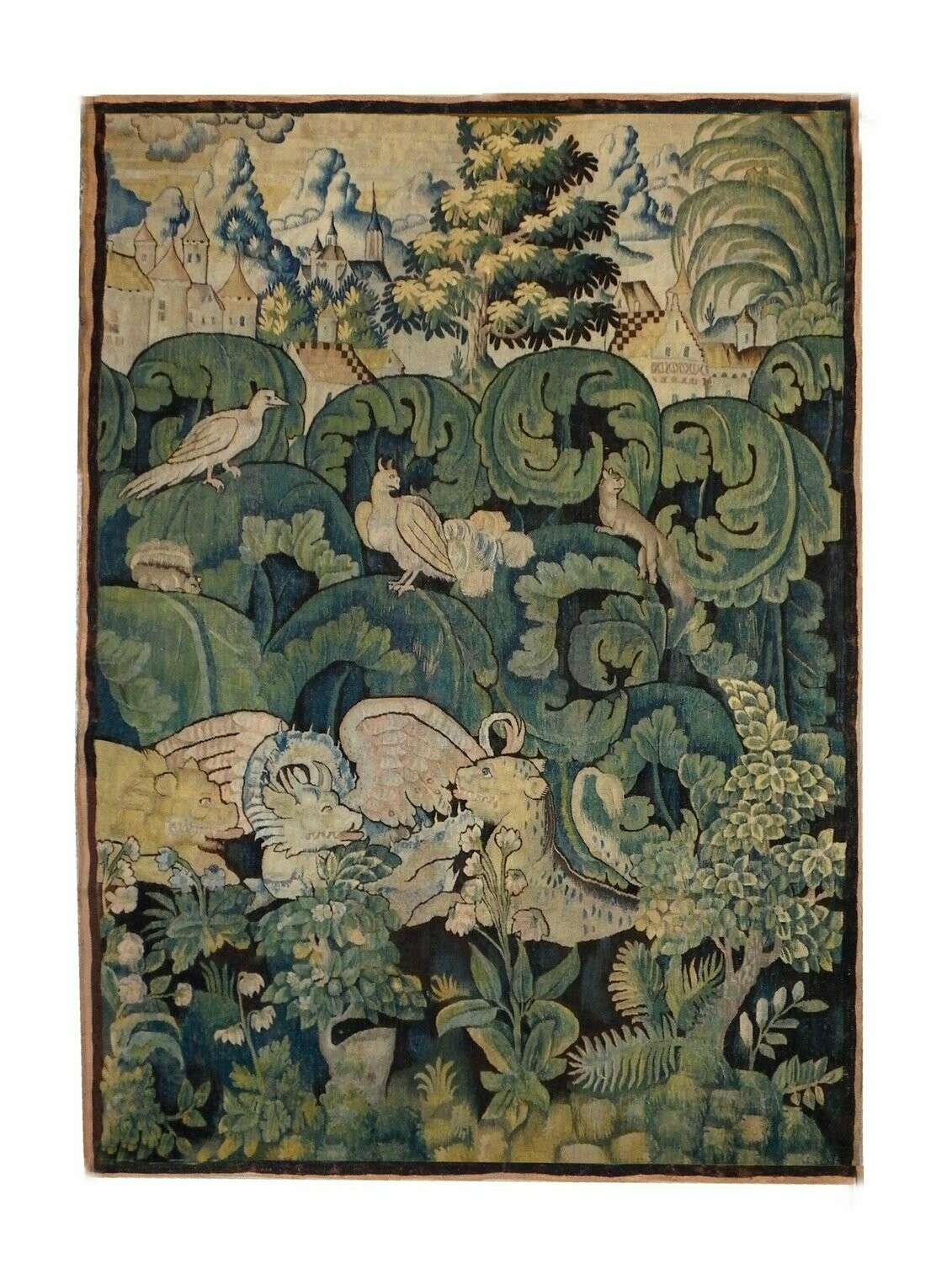Feuilles de Choux Tapestry - 16th century - Dimension:1.75Lx2.50H
€0.00
In stock: 1 available
Product Details
Reference number: 78J / 2793
Origin: La Marche - France
Period: 16th century
Provenance: Private Collection
Composition: Wool and silk
Dimension: 1.75 L x 2.50 H
Tapestry of the Ateliers de la Marche - called "Cabbage Leaves" Period 16th century
The so-called cabbage leaf tapestries, which take their name from the exuberant presence of foliage close to the cruciferous leaves, are among the most remarkable and mysterious of the tapestries. The visual dynamism of the drawing - provided by the profusion of wild leaves that seem to come out of the dark - sometimes seems to the limit of abstraction for the modern eye. If the origins of these powerful images are somewhat blurred, their impact is no less strong. The oldest of the tapestries have a background with rather classic and orderly decor of flowers and foliage. We thus find it from 1430 in an inventory of Philippe le Bon in which a tapestry is described as follows: 'of Arras thread, with several grasslands and flowers, crafted in the middle of two characters, serving as a knight and lady, and six children's figures'.
More wild and almost surreal, the cabbage leaf tapestries appeared in the middle of the first half of the 16th century and probably derived from a thousand flower tapestries. While the latter preserved an apparent peace and order and were drawn without any perspective, the cabbage leaf tapestries, with their large leaves showing a rich and spontaneous imaginary nature, defying form and reason, are resolutely three-dimensional.
Our house ensures you a well cleaned tapestry, in good condition with its fixing system. If necessary, we will inform you of the work that has been done.
All our tapestries are sold with an approved invoice and expertise and can be presented to you at your home in France and neighbouring countries before your final decision.
Save this product for later
Display prices in:
EUR




